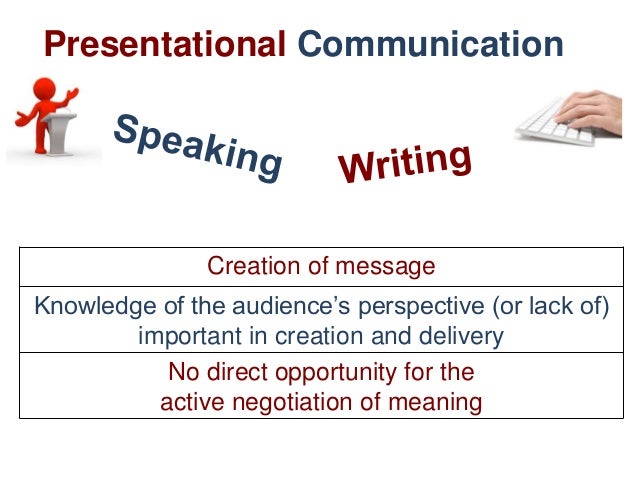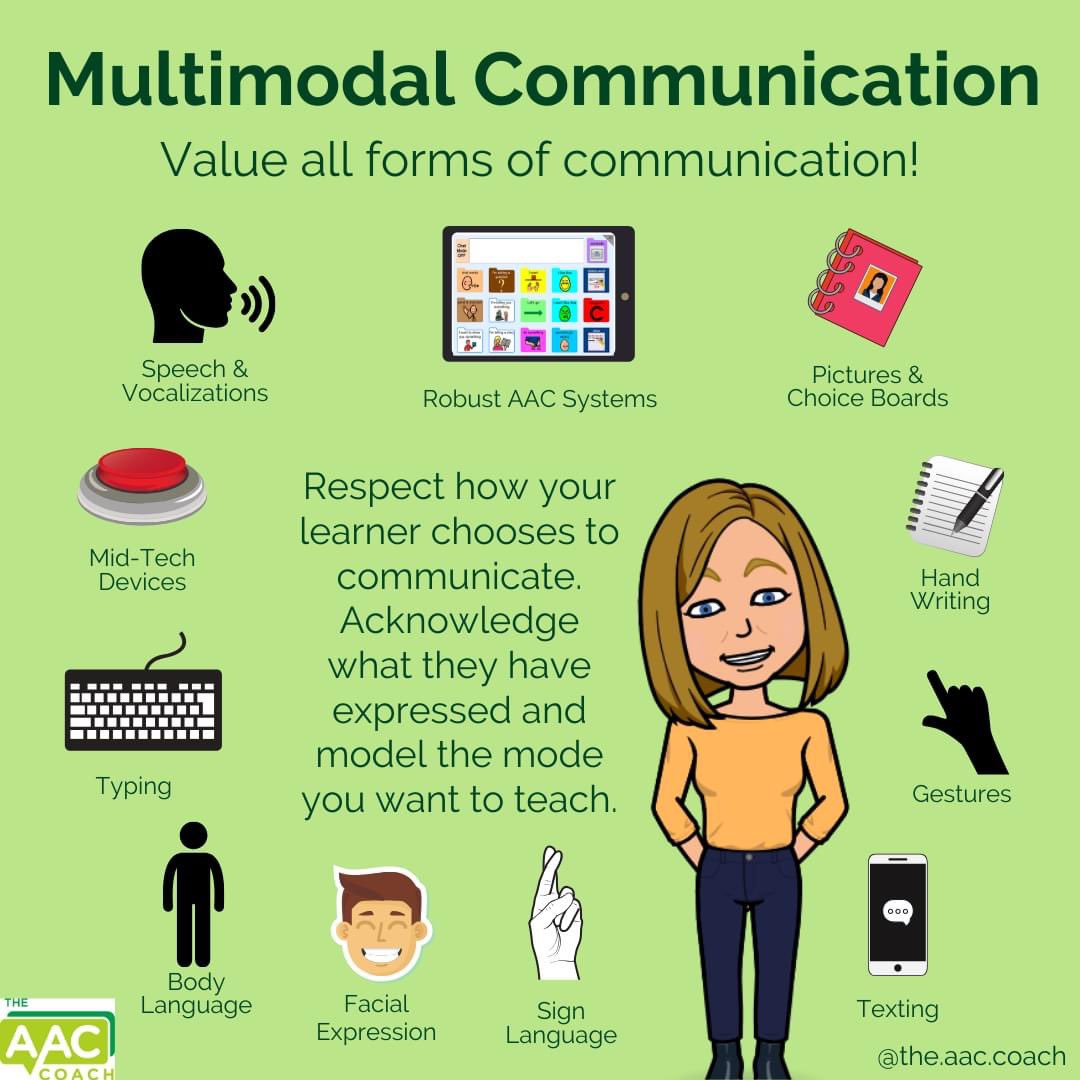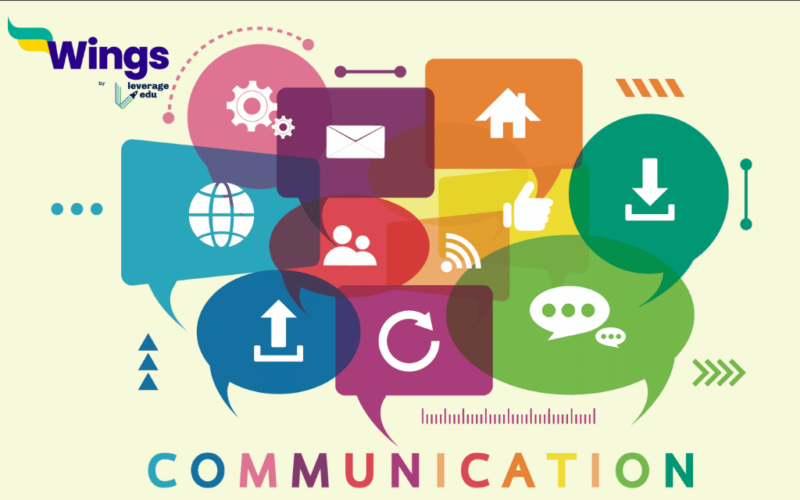Communication is the process of conveying information from one person, group, or place to another. It is through communication that we share ideas, thoughts, and messages. At its core, communication involves three key elements: the sender, the message, and the receiver. The modes of communication refer to the different mediums or methods used to transmit the message. There are several modes of communication, including Interpretive Communication, Interpersonal Communication, and Presentational Communication.
In this blog, we will explore the various modes of communication, their significance, and provide recommendations on the best resources to further understand these communication methods.
This Blog Includes:
- What Are the Modes of Communication?
- 7 Types of Communication
- Here’s how to Explain About Different Communication Modes
- 1. Interpretive Communication
- 2. Interpersonal Communication
- 3. Presentational Communication
- 4. Linguistic or Alphabetic Communication
- 5. Gestural Communication
- 6. Aural Communication
- 7. Visual Communication
- 8. Spatial Communication
- 9. Multimodal Communication
- 10. Various Cultural and Intercultural Modes of Communication
- Interpersonal vs Interpretive vs Presentational Communication
- 10 Methods of Communication
- Best Books to Learn Modes of Communication
- Modes of Communication PPT
- FAQs
What Are the Modes of Communication?
Modes of communication refer to the various channels or methods used to transmit information, thoughts, and emotions. These modes can be verbal, non-verbal, or even technological, adapting to the needs and preferences of individuals, cultures, and contexts.
7 Types of Communication
The types of communication represent the different ways used to communicate messages while the modes of communication focus on the mediums. Understanding the different types of communication modes is essential for both personal and professional growth. Here are the 7 types of communication:
1. Verbal Communication
Verbal communication involves conveying messages through speech and spoken words. It happens when we engage in conversation with others and can be either formal or informal. When conducted in person, verbal communication is often accompanied by non-verbal cues.
This is the most direct form of communication and is highly effective in situations where clarity and immediacy are essential.
- Oral Communication: Spoken interaction, such as conversations, speeches, presentations, and meetings.
- Written Communication: Written messages, such as emails, letters, reports, or text messages.
Examples of Verbal Communication:
- A teacher explaining a lesson in class.
- A job interview conducted face-to-face or over the phone.
- A company sending official email correspondence.
2. Non-verbal Communication
Body language, facial expressions, eye contact, appearance, and sign language. Non-verbal communication complements verbal communication and also helps when words don’t help. It is an important type of communication in interviews and discussions as they value it a lot.
It plays a crucial role in conveying emotions and supporting the message delivered through verbal communication.
- Body Language: Includes movements such as gestures, posture, and facial expressions.
- Paralinguistics: Tone, pitch, and loudness of voice.
- Eye Contact and Proximity: How physical closeness and eye gaze convey meaning.
Examples of Non-Verbal Communication:
- A handshake to greet someone.
- A smile to show approval or friendliness.
- Nodding during a conversation to indicate agreement.
3. Written Communication
The use of written words to convey messages. Written communication happens through email, memos, texts, posts, etc. While written communication helps you share your thoughts well, sometimes it does not fully convey the emotion that you are trying to share.
It is commonly used in both professional and personal contexts, offering clarity and a lasting record.
Examples of Written Communication:
- Emails: Used for formal or informal correspondence in workplaces and personal settings.
- Reports: Structured documents to present findings or updates.
- Letters: Formal written communication used in business or personal matters.
4. Listening
Listening is one of the most important parts of communication as it helps you understand the perspective of the communicator and effectively engage with them. The process of any communication places a crucial value on listening correctly and responding appropriately.
Effective listening strengthens interpersonal relationships and enhances comprehension.
Examples of Listening:
- Active Listening: Fully focusing on the speaker without distractions.
- Empathetic Listening: Understanding emotions and responding thoughtfully.
- Critical Listening: Evaluating the content to form logical conclusions.
5. Visual Communication
Visual communication involves conveying messages through images, graphs, objects, and other visual elements. It plays a vital role in modern methods of sharing key information and is commonly utilized in presentations, television, and various media formats.
It enhances understanding and retention by appealing to the visual senses.
Examples of Visual Communication:
- Infographics: Presenting data visually for better comprehension.
- Videos: Sharing tutorials or advertisements to engage audiences.
- Graphs: Displaying statistical data for easier analysis.
6. Aural Communication
Aural communication involves the sense of hearing. It consists of different forms of communication that rely on spoken words, sounds, and other auditory cues. Aural communication involves spoken words, non-verbal elements such as tone of voice, pitch, and rhythm, good listening skills, content and delivery of speech, etc.
It is essential for auditory learners and situations where verbal interaction is key.
Examples of Aural Communication:
- Podcasts: Sharing knowledge or entertainment through audio.
- Music: Expressing emotions or ideas creatively.
- Announcements: Delivering information verbally in workplaces or public spaces.
7. External Communication
External communication refers to the transmission of information and data in and outside an organization. This external mode of communication involves entities like customers, suppliers, partners, investors, regulatory bodies, the media, and the general public.
It is critical for building relationships and establishing credibility.
Examples of External Communication:
- Press Releases: Sharing official announcements with the media.
- Client Emails: Interacting with clients to discuss business updates.
- Social Media Posts: Engaging with customers and promoting services.
Here’s how to Explain About Different Communication Modes
Communication is the process of sharing information between individuals using a set of common rules, behaviours, symbols, and signs. Thus, there are five modes of communication:
- Interpretative Communication
- Presentational Communication
- Interpersonal Communication
- Verbal Communication
- Non-Verbal Communication
Before we delve deep into the topic, let us first understand the importance of different modes of communication.
- Maintains the flow of conveying information
- Helps in devising plans and strategies for reaching a goal
- Builds cordial relations and soft skills
- Decision-making becomes more effective and less time-consuming
- Problem-solving and conflict management become easier
1. Interpretive Communication
Also referred to as “one-way communication”, in this mode, the information conveyed by the sender is interpreted by the receiver in its original form. The target has to understand the message in both written and spoken form keeping various aspects in mind.

For example, in a class, the learners may not understand every word said by the teacher but are expected to understand the main crux of the topic. Some of the main highlights of Interpretative Communication are:
- Learners understand, interpret, and analyze what is heard, read, or viewed on a variety of topics.
- This mode of communication involves interpreting the author or producer’s intent.
- There is no alternative to the active negotiation of meaning with the writer, the speaker, or the producer.
2. Interpersonal Communication
Interpersonal communication is the process by which people exchange information through verbal and nonverbal messages. It is an unmediated mode of communication that occurs when we interact and attempt to mutually influence each other, simultaneously, in order to manage relationships.

Although interpersonal communication can encompass oral, written, and non-verbal forms of communication, the term is usually applied to spoken communication that takes place between two or more individuals on a personal or face-to-face level. Examples of Interpersonal Communication include:
- Personal Interview
- Telephonic Conversations
- Interactive Sessions
- Debates
- E-mails
- Text Messages
3. Presentational Communication
Presentational Communication is another type of one-way communication, which facilitates interpretation by members of another group where no direct opportunity for the active negotiation of meaning between members of the two groups exists.

With this mode of communication, a person is speaking to an audience that can be rehearsed, pre-prepared, or scripted. Some of the main highlights of Presentational Communication have been given a rundown below.
- To ensure the intended audience is successful in its interpretation, the “presenter” needs knowledge of the audience’s language and culture.
- No direct opportunity for engaging with a larger audience exists in this form of communication.
4. Linguistic or Alphabetic Communication
As one of the popular modes of communication, Linguistic or Alphabetic Communication mainly refers to written or spoken communication where the sender conveys their message through writing on paper or through speaking.
Examples: Text messages, audio messages, emails, speech, notes and lists, etc.
5. Gestural Communication
Gestural Communication has its quintessential emphasis on body language and physical movements to communicate messages. Sign Language is the best example of the gestural mode of communication as those who can’t talk or hear are able to communicate best through their gestures and have their own set of unique languages to converse.
While this mode of communication is mainly combined with spatial, aural or linguistic ones, it can also be used individually given that both the sender and receiver have common points of reference and meanings to have an understandable communication.
6. Aural Communication
As the name suggests, oral communication uses audio mode to convey messages whether it is through sounds or spoken audio. The speaker’s voice and pronunciation need to be clear and precise with no background noise.
Examples: Radio, audio messages, music, recordings, songs, audiobooks.
7. Visual Communication
Visual Communication can be simply termed non-verbal communication as it comprises visual messages from the sender to the receiver. It is one of the oldest modes of communication when the ancient people didn’t know a language to communicate with, it is through pictures, drawings and symbols that they were able to talk and converse with each other.
Examples: Pictures, Videos, Charts, Graphs, Symbols
8. Spatial Communication
Spatial Communication elaborates upon the use of physical space in the text as well as its overall structure to convey certain meanings and messages. The physical layout of any written text is deliberately designed to make it look a certain way and adhere to a particular theme. Websites also use this unique mode of communication in choosing a certain font, style, design and layout to make any website user-friendly and more interactive.
9. Multimodal Communication
Multimodal Communication can be simply referred to as communication through varied modes such as verbal, written, gestures, etc. There are different modes of multimodal communication and it is popularly used in higher education to accentuate the learning experience for students.

Here are the major 5 modes of communication:
- Linguistic or Alphabetic: Either written communication or spoken communication
- Gestural: Using Gestures
- Visual: Pictures, Videos, Infographics
- Aural: Audio, Music, Sounds
- Spatial: Physical coordination, positions, proximity
10. Various Cultural and Intercultural Modes of Communication
Several cultural modes of communication are specific to each area and culture. It can be symbolic usage of actions, body language, etc. The culture of a person is not just what they eat or wear but also how they communicate.
Cultural Differences in Communication
In verbal communication, different cultures have different languages, dialects, and even accents. Even the tone and volume of communication differ from place to place. For example, the tone of a native German speaker might angry with a British speaker, even if they both are speaking in English.
In non-verbal communication, several differences can cause miscommunication in intercultural discussions. Some of the major non-verbal modes of communication that change from place to place are:
- Touch
- Eye Contact
- Gestures
- Facial Expressions
- Physical Space
- Posture
Here, let’s take an example to understand the difference in intercultural communication. A stranger from America is likely to make eye contact to express a sense of equality between you while Asians prefer to avoid eye contact as a sign of respect.
Another example would be, that it is customary in France to kiss on both cheeks as a form of starting a conversation. But in India, people greet you with Namaste avoiding any touch-based communication.
Interpersonal vs Interpretive vs Presentational Communication
| Components | Interpersonal | Interpretive | Presentational |
| Type | Two-way | One-way | One-way |
| Negotiation | Active negotiation of meaning between individuals | No active negotiation of meaning with the writer, producer or speaker | No plausible means of engaging the masses |
| Mode of Communication | Speaking, Listening, Reading, and Writing are the main modes of conveying and interpreting messages | Reading, Viewing and Listening to texts | Writing and Speaking are the 2 major modes of communication |
| Examples | Social Media, text messages, telephone, etc. | Stories, literature, articles, speeches, songs, radio news, videos, movies, presentations, etc. | Articles, flyers, short stories, reports, presentations, skits, debates, speeches, etc |
10 Methods of Communication
Different types of communication methods are used to deliver your message. Here, the 10 mediums of communication are different from the previous ones. Interpersonal, interpretive, and presentational modes of conversation are based on human interaction during that communication. While these are based on the type of source we use. These are some of the real-world communication methods. Let’s have a look at them:
- Typewriting only: In this method, communication happens only through typing. Examples are emails, messages, etc.
- Handwriting only: Here the communication from both ends is solely based on handwriting. An example is a teacher correcting a student’s exam paper and writing comments on it.
- Voice only: Here, both communicators use voice only. An example is a phone call or a normal verbal communication
- Video only: Here, both communicators use video to communicate. An example is a video call
- Handwriting and Typing: Here either one of the communicators is using handwriting to share their message and the other is using typing to relay their response or vice versa.
- Typewriting and Video: Here either one of the communicators is using handwriting to share their message and the other is using typing to relay their response or vice versa.
- Handwriting and Video: Here either one of the communicators is using handwriting to share their message and the other is using video to relay their response or vice versa.
- Voice and Typewriting: Here either one of the communicators is using voice to share their message and the other is using typing to relay their response or vice versa.
- Voice and Handwriting: Here either one of the communicators is using voice to share their message and the other is using handwriting to relay their response or vice versa.
- Voice and Video: Here either one of the communicators is using voice to share their message and the other is using video to relay their response or vice versa.
Best Books to Learn Modes of Communication
Here are some excellent books on modes of communication:
| Book Name | Author | Link |
| Registers and Modes of Communication in the Ancient Near East | Gillan Davis | Buy Here! |
| On Modes of Communication Other Modes of Conveyance | Roger Pinette | Buy Here! |
| Multimodal composition: A Critical Sourcebook | Claire Lutkewitte | Buy Here! |
| East and West Modes of Communication: Proceedings of the First Plenary Conference at Merida | Evangelos Chrysos and Ian Wood | Buy Here! |
| Communicating The Multiple Modes of Human Communication | Ruth Finnegan | Buy Here! |
| Teacher’s Handbook, Contextualized Language Instruction | Judith L. Shrum, Glisan | Buy Here! |
| Writer/Designer Language and Identity Across Modes of Communication | Dwi Noverini Djenar | Buy Here! |
Modes of Communication PPT
A Modes of Communication PPT serves as a dynamic tool to explore the various ways humans share information and interact with one another. Designed to enhance understanding, it uses visuals, examples, and concise explanations to provide a comprehensive overview of communication strategies in different contexts.
Related Articles
FAQs
Ans: The New London Group defines five forms of communication as visual, verbal, spatial, auditory, and gestural.
Ans: Five Communication Styles
Communication through speech. When we speak with others, we engage in verbal communication.
Communication that is not verbal. What we do while speaking frequently communicates more than what we say.
Communication in writing.
Listening.
Visual Communication
Ans: Non-verbal communication.
Verbal communication.
Written communication.
Visual communication.
Ans: Verbal communication involves the use of words, while non-verbal communication involves gestures, body language, and facial expressions.
Ans: Non-verbal communication plays a crucial role in expressing emotions, reinforcing messages, and building rapport.
Ans: Different modes of communication play a vital role in ensuring effective exchange of information between senders and receivers.
Ans: The most effective mode of communication varies depending on the situation. However, face-to-face communication is often ideal for resolving workplace conflicts and handling sensitive discussions. Engaging in direct, in-person conversations demonstrates integrity, honesty, and authenticity, making it a powerful approach in challenging scenarios.
Ans: Technology has revolutionised communication by introducing digital modes like emails, instant messaging, and video conferencing.
Ans: Yes, a message can combine multiple modes, such as a presentation that includes verbal speech, visuals, and written text.
Ans: Written communication provides clarity, a permanent record, and allows for careful editing before sharing.
Ans: Visual modes like charts, diagrams, and videos make complex information more accessible and engaging.
Ans: The key components include the sender, message, medium, receiver, and feedback.
Ans: Choosing the right mode depends on factors like audience, message complexity, urgency, and the need for feedback or record-keeping.
Hope this blog helped you in understanding the fundamental concepts related to the different modes of communication. Be it in an organisation or for competitive exams like IELTS and TOEFL, your communication skills are evaluated on various parameters, and to create a lasting impression, one needs to overcome the barriers to communication. Enrol in Leverage Edu’s Leverage Live classes where the British Council certified experts, through one-on-one sessions, mock tests, and updated study materials will assist you in improving your communication skills in an effective way!
-
Good day!
First of all, I want to thank you for making this blog. It is truly informative and the topics are discussed briefly. This is really helpful. I also liked how you chose words that are common to everyone because it helped the readers (including me) to understand the discussion very well.
Thank you very much!
-
Hi,
Thanks for your feedback!
-
-
Modes of communication skills

 One app for all your study abroad needs
One app for all your study abroad needs





























 45,000+ students trusted us with their dreams. Take the first step today!
45,000+ students trusted us with their dreams. Take the first step today!



11 comments
Good day!
First of all, I want to thank you for making this blog. It is truly informative and the topics are discussed briefly. This is really helpful. I also liked how you chose words that are common to everyone because it helped the readers (including me) to understand the discussion very well.
Thank you very much!
Hi,
Thanks for your feedback!
Modes of communication skills
Great
Hey Aisha!
Glad you enjoyed our blog. Please explore similar blogs and subscribe to our newsletter!
Very informative and comprehensive article.
I have been looking for a such detailed explanation
for some time. Thank you
Hey George!
Thank you for the positive feedback. We really appreciate it. If you liked this blog then we urge you to read similar blogs and subscribe to our newsletter!
It was great, thank you so much
Thank you for the comment. Subscribe to our newsletter and get latest updates on exciting news, blogs and quizzes!
Great article! Thank you for sharing this informative post, and looking forward to the latest one.
Thank you for your comment, Claire! You can sign up for our newsletter to get the latest updates about our blogs and fun quizzes.